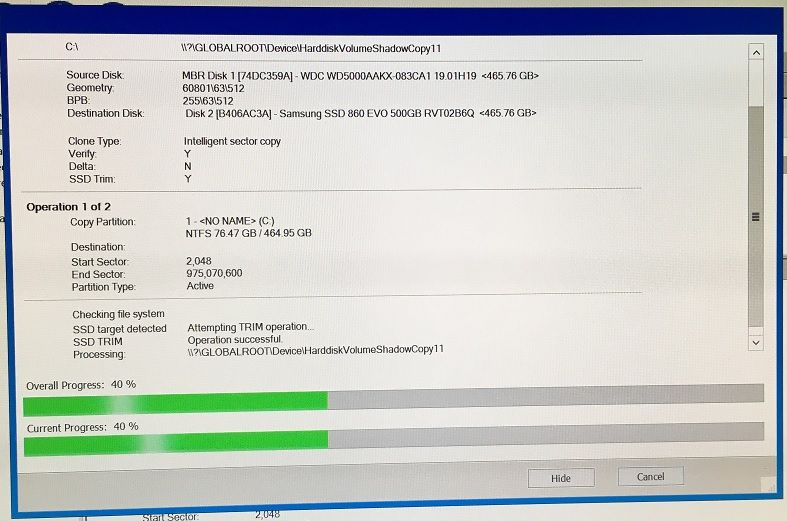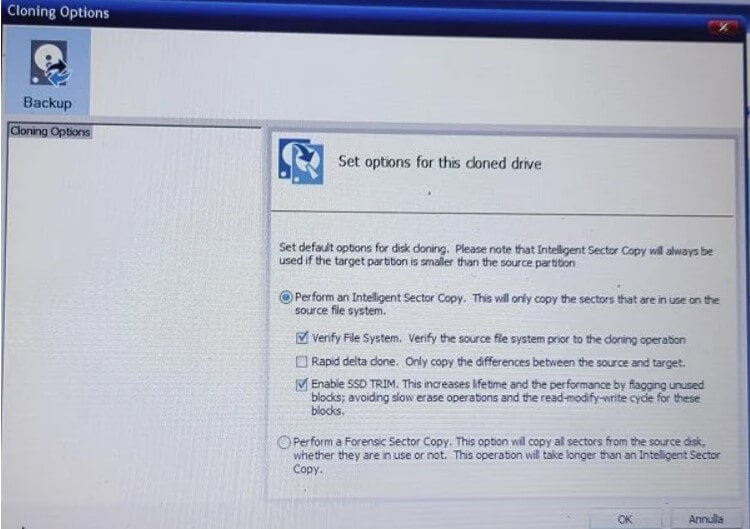

Everything goes perfectly until we want to have exactly the same data that was on the old PC. Even upgrading from an HDD to an SSD can bring a massive (and exciting) increase of performance for most PCs.

But yes, it will be identified properly once it's installed internally.Everyone knows how exciting it is to get a new computer and all the benefits this brings to our lives. Some such adapters display the model of the adapter, while others pass through the name of the attached disk. The ASM/ASX name is the vendor (ASMedia) and chipset model of the USB to SATA adapter you're using. If you want to include that content, then perform the clone again from the Rescue Media environment, which does not need to use VSS since the source disk won't be "live" in that environment and therefore will clone everything, since VSS-aware components won't have an opportunity to remove content from a snapshot beforehand. System Restore points are also excluded from VSS snapshots. For example, the Windows Search database index is purged from snapshots because it can grow quite large and is automatically rebuilt if it's missing anyway. Some Windows components remove data from VSS snapshots. Snapshots are necessary when cloning a "live" disk in order to ensure data integrity. The capacity difference is because clones performed within Windows are based of VSS snapshots of the source disk. Will my PC detect it as a 860 Evo once I install it internally Macrium shows my SKHynix and Seagate drives and their model names, but the clone just has a generic asx150 or something similar. The new clone isn't being recognized by it's model name yet, which is a Samsung 860 Evo. It this because I used intelligent sector copy? Nothing was changed on the internal drive while I did the cloning process.Ģ. The new clone has 3Gb less data on it for some reason. I can see and access all my data from it while it's connected via the USB cable.ġ. The clone process completed and was successful.

See the replies I wrote in this thread just today for this exact scenario: To do that requires you to use the drag and drop method of staging Source partitions on the Destination.

But if the new SSD has a different capacity than your current drive, you should stage the clone to specify the desired partition sizes upfront rather than trying to sort it out later. There are some special cases where you might want to stage things beforehand, but they’re rare and wouldn’t apply to your scenario.Yes the default settings are fine. If any existing partition occupies any space that a clone/restore operation will he targeting, then that existing partition gets destroyed. No prep needed for typical scenarios, and actually any prep you do will typically be blown away anyway.


 0 kommentar(er)
0 kommentar(er)
